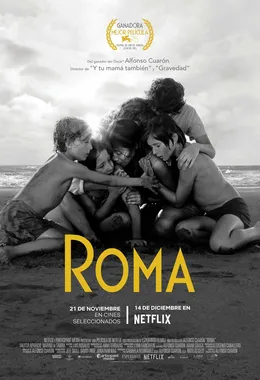Historical accuracy of Roma

Historical accuracy of Roma

Characters
Cleodegaria "Cleo" Gutiérrez
Cleo is directly inspired by Liboria "Libo" Rodríguez, the real-life domestic worker who raised director Alfonso Cuarón. Key events, like her pregnancy and the stillbirth, are based on Libo's actual experiences, though dramatized.
Sofía
Sofía is based on Cristina Orozco, Alfonso Cuarón's mother. The film portrays her experiences dealing with her husband's infidelity and departure, reflecting the director's memories of his family life.
Antonio
Antonio is based on Alfredo Cuarón, the director's father. His portrayal as absent and unfaithful reflects Cuarón's perspective on his parents' separation during his childhood.
Teresa
Teresa represents Alfonso Cuarón's maternal grandmother, depicting the role of the extended family within the household.
Adela
Adela likely represents another real domestic worker who worked alongside Libo Rodríguez, or serves as a composite reflecting the experiences and camaraderie of household staff.
Fermín
Fermín represents the young men recruited into paramilitary groups like Los Halcones, linking Cleo's personal story to the real-life political violence of the Corpus Christi Massacre depicted in the film.
More characters
Professor Zovek
Professor Zovek was a real Mexican martial artist, escape artist, and public figure famous in the 1970s. His depiction leading the outdoor training session is based on the real person.
Toño (Child)
Represents one of Alfonso Cuarón's brothers (likely Carlos Cuarón), reflecting the children's perspective within the family dynamic based on the director's memories.
Paco (Child)
Represents the young Alfonso Cuarón himself, observing the events unfolding within his family and household during the early 1970s.
Pepe (Child)
Represents Alfonso Cuarón's younger brother (Alfredo "Freddie" Cuarón), completing the depiction of the director's siblings based on his memories.
Sofi (Child)
Represents Alfonso Cuarón's sister (likely Cristina Cuarón), portraying the complete family unit as remembered by the director.
Story
Cleo's personal life
Cleo's story is inspired by the director's own childhood nanny, Liboria 'Libo' Rodríguez. While based on a real person, Cleo's specific experiences and relationships are fictionalized for the film.
The portrayal of the family
The family Cleo works for is based on the director's own family. While the film draws on his personal experiences, the specific interactions and character dynamics are fictional.
Setting
Life in 1970s Mexico City
The film beautifully captures the atmosphere and daily life in Mexico City in the 1970s, including the architecture, social dynamics, and cultural context. This is a strong aspect of the film's historical accuracy.
The 1971 Corpus Christi Massacre
The Corpus Christi Massacre, a real event in which student protesters were killed, is depicted in the film. Its inclusion is crucial to the film's historical context and its exploration of social and political tensions.
The social class divisions
The film accurately portrays the stark social class divisions in Mexico City at the time, with the wealthy family Cleo works for living a privileged life compared to the domestic workers and those in poorer neighborhoods. This is a key theme and is historically accurate.
The role of domestic workers
The film gives a voice to the often-overlooked role of domestic workers in Mexican society. It accurately shows their contributions and the often-unequal power dynamics in their relationships with their employers.
The depiction of the hospital
The film depicts the conditions and care in the hospital where Cleo gives birth. While specific details are unknown, the depiction of the hospital's resources and the level of care is likely consistent with the era.
The cultural references
The film is filled with subtle cultural references to the time period, from music to television shows to everyday objects. These details contribute to the film's authenticity and historical accuracy.
The depiction of the 'Halcones'
The 'Halcones', a government-backed paramilitary group involved in the Corpus Christi Massacre, are depicted in the film. Their existence and actions are a historical fact.
